MenuWorks Blog

The Dirty Truth About Menus
"Menus are among the most unsanitary surfaces in a restaurant. The bacteria count on menus can be as high as 185,000 per square centimeter – far more than found on a toilet seat, according to a study published by Cleaning & Maintenance Management in 2014.
Upwards of 95% of people fail to properly wash their hands after restroom use, according to statistics. That makes handling a restaurant menu before eating a health gamble." (Staff, 2013)

Employee Retention: What’s the Cost?
Employee retention is important to any company, but especially to restaurants. Many owners may not have considered the cost associated with training a new employee and how it impacts their bottom line. While someone is training the new hire, the trainer isn’t as efficient and the new hire is unproductive. New hires will make mistakes, and until they’re fully trained, won’t function as fast as your experienced staff. They may also be less likely to upsell your more profitable products to clients.
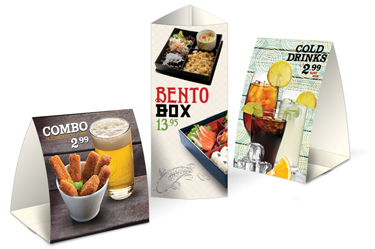
Table Tanks
MenuWorks' Table Tanks move on-table promotion to the next level. Our vertical display designs provide ample print territory and get attention using high-impact print quality and graphics. When a guest sits down, they often see the table promotions before even opening a menu. This provides an opportunity to influence customers and highlight specific selections.

Making Mom and Dad Happy
According to industry reports, the economy is having a positive impact on dining out. Parents with children are dining out more often which means restaurants are now challenged to attract that group to their restaurant. 50% of kids visiting a restaurant make their own buying decisions. Children as young as five years old are being taught to make a decision on their own. Parents also use the dining out experience to encourage kids to try new foods and experience different options. Gearing your restaurant towards children can increase revenues and return patrons.
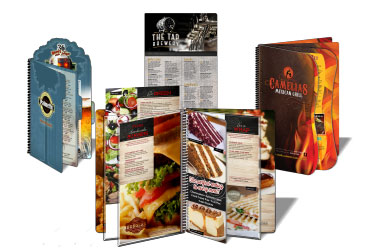
What’s on Your Menu
Recently, MenuWorks was featured in Bar Business Magazine’s May issue, in an article titled “What’s on your Menu.” Here is an excerpt from that article:
MenuWorks specializes in laminated, waterproof menus. “Our menus are available in coil, flat, bifold, and trifold solutions,” says Amanda Marcengill, Inside Sales Manager. “In addition to laminated menus, we also offer café covers, royal covers, to-go menus, kids placemats, and table tents.”
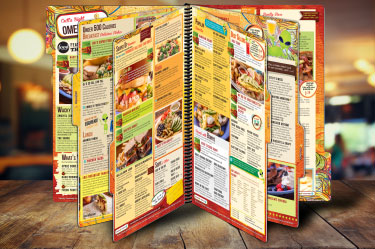
Focus on the Outcomes
In a recent issue of Restaurant News, there was an interesting article by Jim Sullivan (Professional speaker and author) titled “10 Things That Won’t Change for Restaurants in 2018.” One of the takeaways was to focus on the outcomes. This caught our attention, as a custom menu provider, since we realize the importance of menu design in driving positive results.

Your Metrics Matter
Restaurants are a business. Like any business. you have to watch a variety of metrics to manage your restaurant to success. Most studies list four areas as the key metrics to monitor: sales, customer service/engagement, safety and profit.

Competing with Fast Food
If you’re in the restaurant business you’re well aware of the trend toward fast-casual dining. A good definition might be “sit down dining at the customer’s pace.” An increasing number of surveys show dining customers are looking for something between traditional fast good and fine dining with many of the attributes associated with each.

Mobile Menus – And, We’re Not Talking About Smartphones
The fast-casual restaurant market has been hit hard with declining sales in the past few years. Part of the reason has been attributed to the 15%-20% tips expected in casual dining. Another reason is the fact many consumers prefer to stay at home. Even the increase in the use of Netflix and other streaming movie systems have contributed to keeping restaurant patrons at home. This has impacted many chains, some to the point of closing. However, there is a light at the end of the tunnel in the form of carry out.

Are Your Menus “Free From”?
There’s no doubt about it, Americans love to eat out. However, many are watching what they eat due to allergies or just the desire to live a healthier lifestyle. Patrons may be looking for menu items that are free from sugar, nuts, eggs and gluten, to name just a few. Many restaurants are updating their menus to include “free from” selections in order to better identify available choices for those with diet restrictions.
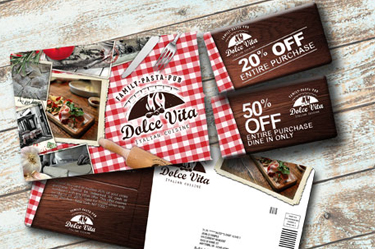
Using Direct Mail to Drive Sales
Direct mail in a postcard format has been an effective marketing tool for many years and continues to be one of the most successful media for driving customer responses. A postcard direct mail program does not have to be complicated, but there are some guidelines that should be followed.

Menus for Millennials
Millennials (born 1977-1995) are a major source of revenue for many restaurants and bars. Baby boomers (1946-1964), on average, eat out once per week, while millennials average three times that number. A survey report by Bankrate, states 51% of millennials visit a bar at least once per week and 54% eat out or order take out, three times per week. According to Food and Wine, the average is five times per week!
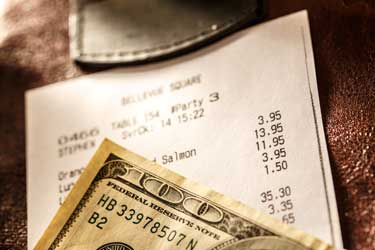
Food For Thought: New Menus Pay for Themselves
To stay in step with rising food costs, restaurant owners must keep on top of the numbers and update their establishment’s pricing. And, yes, reprinting the menu does cost money – but NOT doing so costs restaurant businesses far more.
When it comes to updating menus, many restaurant owners often hesitate, or worse still, do nothing at all. They will coast along and update their menus every few years, thinking this spares them the expense of new ones, without reflecting their actual food cost increases in the gap that transpires. When they finally do redo their menu, it often includes significant increases based on food costs that have mounted up over the extended period of time. This results in big price bumps that their customers most certainly notice. These larger increases can really backfire, especially if a restaurant’s competitors have been incrementally -- and less noticeably -- raising their prices all along.
